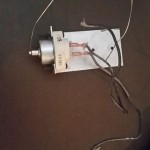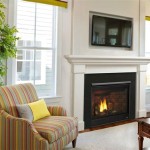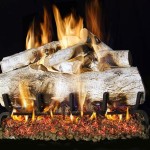Fireplace Chimney Cleaning: How Often is Necessary?
Maintaining a fireplace chimney is a crucial aspect of home safety and efficient operation. Creosote buildup, obstructions from debris, and structural damage can all compromise the functionality of a chimney, leading to potential hazards like chimney fires and carbon monoxide poisoning. Determining the appropriate frequency for chimney cleaning is essential for mitigating these risks and ensuring the continued safe use of the fireplace.
The National Fire Protection Association (NFPA) provides guidelines for chimney maintenance, recommending that chimneys be inspected at least once a year. While an inspection can identify potential issues, the actual need for cleaning is determined by several factors, including the frequency of fireplace use, the type of fuel burned, and the condition of the chimney itself. There is no one-size-fits-all answer to the question of how often a chimney should be cleaned. However, adhering to established recommendations and understanding the factors that influence creosote accumulation can guide homeowners in making informed decisions about chimney maintenance.
Creosote is a byproduct of incomplete combustion that occurs when wood is burned in a fireplace. It is a black or brown residue that accumulates on the inner walls of the chimney. Its composition varies depending on factors such as the type of wood burned, the efficiency of the burn, and the temperature of the flue gases. Creosote is highly flammable, and even a small accumulation can ignite, leading to a dangerous chimney fire. Regular chimney cleaning removes this accumulation, significantly reducing the risk of a fire.
The frequency of chimney cleaning is not solely determined by the calendar. A chimney that is used heavily throughout the winter months will likely require more frequent cleaning than one that is only used occasionally. Similarly, the type of wood burned can impact creosote buildup. Softwoods, such as pine, tend to produce more creosote than hardwoods, such as oak or maple. The moisture content of the wood is also a significant factor; burning unseasoned or wet wood results in more smoke and creosote.
Frequency Based on Usage and Fuel Type
As a general guideline, the NFPA 211 standard recommends that fireplaces used for primary heating should have their chimneys cleaned at least once a year. This recommendation is due to the increased frequency of use and the potential for significant creosote buildup. For fireplaces used less frequently, such as on weekends or for occasional ambiance, a less frequent cleaning schedule may be sufficient. However, annual inspections are still crucial to assess the condition of the chimney and identify any potential problems.
The type of fuel burned directly affects the rate of creosote accumulation. Hardwoods, when properly seasoned, burn cleaner and produce less creosote compared to softwoods. Seasoned wood has a lower moisture content, which results in a hotter and more complete burn. This reduces the amount of unburned particles in the smoke that contribute to creosote formation. Conversely, burning green or wet wood increases smoke production and leads to a faster buildup of creosote. The NFPA recommends burning only seasoned hardwoods in fireplaces to minimize creosote accumulation and reduce the need for frequent cleaning.
Fireplaces that burn manufactured fire logs also contribute to creosote buildup, although the characteristics of the creosote may differ. Some fire logs are designed to burn cleaner than natural wood, but they can still leave a residue that requires removal. It is important to follow the manufacturer's instructions for burning fire logs and to monitor the chimney for creosote accumulation regardless of the type of fuel used.
Signs That Indicate a Need for Chimney Cleaning
Beyond a regular maintenance schedule, there are several warning signs that indicate a chimney needs cleaning. Recognizing these signs can help homeowners proactively address potential problems before they escalate into serious safety hazards. One of the most obvious signs is the presence of visible creosote buildup on the chimney walls. If the creosote is thick and flaky, or if it appears as a shiny, tar-like glaze, it is a clear indication that the chimney needs to be cleaned.
Another sign is poor draft. A properly functioning chimney creates a draft that pulls smoke and combustion gases up and out of the house. If the draft is weak or non-existent, smoke may back up into the living space, indicating a blockage or excessive creosote buildup in the chimney. A strong, smoky odor emanating from the fireplace when it is not in use can also be a sign of a blocked or dirty chimney.
More subtle signs include the sound of crackling or popping inside the chimney, which can indicate a small chimney fire. While these fires may not be immediately dangerous, they can damage the chimney structure and increase the risk of a larger, more destructive fire in the future. Another indicator is the presence of birds nests or other debris in the chimney. These obstructions can block the flow of smoke and gases, leading to carbon monoxide poisoning and other hazards.
Regular inspections by a qualified chimney sweep are essential for identifying these and other potential problems. A chimney sweep can assess the condition of the chimney, identify any structural damage, and recommend the appropriate cleaning or repair services.
The Role of Chimney Inspections
Chimney inspections are a critical component of fireplace maintenance. The NFPA classifies chimney inspections into three levels, each with a different scope and purpose. A Level 1 inspection is a basic visual inspection of the readily accessible portions of the chimney and fireplace. This type of inspection is typically performed during routine chimney cleaning and is suitable for chimneys that have not undergone any recent changes or experienced any problems.
A Level 2 inspection is more comprehensive and includes a video scan of the entire chimney flue. This type of inspection is required when there has been a change to the fuel type or appliance, after a chimney fire, or when selling or transferring a property. A Level 2 inspection can identify hidden problems, such as cracks or deterioration in the flue liner, that are not visible during a Level 1 inspection.
A Level 3 inspection is the most thorough and involves the removal of certain components of the chimney, such as the chimney crown or flue liner, to gain access to hidden areas. This type of inspection is only required when there are serious concerns about the structural integrity of the chimney or when a Level 2 inspection reveals problems that require further investigation. A qualified chimney sweep can determine the appropriate level of inspection based on the condition of the chimney and the homeowner's specific needs.
In conclusion, determining the appropriate frequency of fireplace chimney cleaning requires a comprehensive understanding of several factors, including the frequency of fireplace use, the type of fuel burned, and the condition of the chimney itself. Regular inspections, coupled with proactive maintenance, are essential for ensuring the safe and efficient operation of the fireplace and preventing potentially dangerous chimney fires. Adhering to the recommendations of the NFPA and working with a qualified chimney sweep can help homeowners maintain a safe and functional fireplace for years to come.

Chimney Cleaning When To Clean A Flue Family Handyman

How Often Do You Need To Clean Your Chimney Other Little Known Facts

Chimney Sweep Cleaning Wethersfield Glastonbury Hebron Farmington

How Often Should You Sweep Your Chimney Smart Service

Do Gas Fireplace Chimneys Need Cleaning Fresh Air

How To Prepare Your Home For A Professional Chimney Sweep

Preparing For A Chimney Sweep Hassle Free Cleaning Inspection

How Long Does Chimney Cleaning Take Sweeps Fireplace Repairs And Installations

How Often Should You Clean Your Chimney Safeway Sweeps

How Often Should You Clean Your Chimney Doctor Flue Inc
Related Posts








